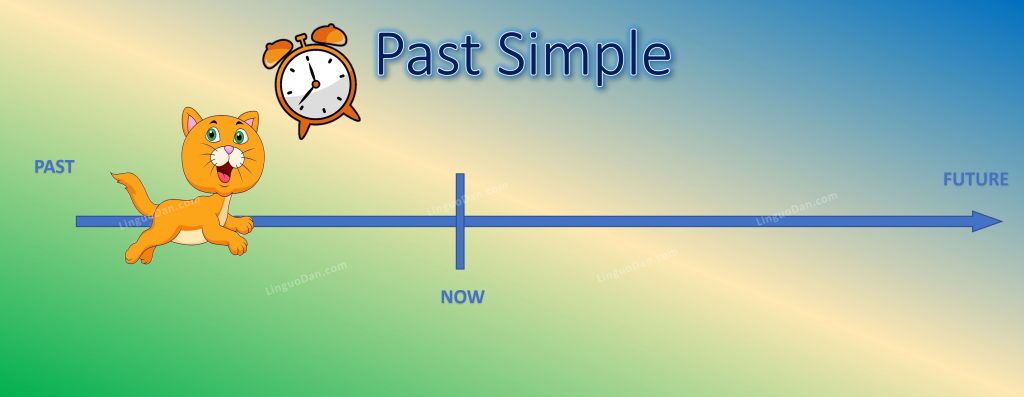Past Simple

Past Simple – simple (indefinite) past tense in English. Usually used in a narrative to describe events in the past, although it also has some other uses. Regular English verbs form the simple past tense by adding -ed, but there are several hundred irregular verbs that use the second form from the irregular verb table.
| Past Simple | ||
| Signal words | Use | Form |
| Last week (month, year, etc.) Yesterday Five minutes ago, two days ago In 2020 In my childhood When I was (at school, at university, a child, etc.) | Action took place in the past, mostly connected with an expression of time (no connection to the present) Long or short finished actions and states in the past Consecutive actions in the past | regular: infinitive + ed irregular: (2nd column of table of irregular verbs) |
The general scheme of using the Past Simple on the example of the regular verb – work
| Positive | Negative | Question |
| I/He/She/It/ You/We/They worked | I/He/She/It/ You/We/They did not work | Did I/He/She/It/ You/We/They work? |
The general scheme of using the Past Simple using the example of an irregular verb – to go
Since this is an irregular verb, turning to the table we get:
| INFINITIVE | PAST SIMPLE | PAST PARTICIPLE |
| to go | went | gone |
Then, according to the scheme, we will get:
| Positive | Negative | Question |
| I/He/She/It/ You/We/They went | I/He/She/It/ You/We/They did not go | Did I/He/She/It/ You/We/They go? |
As you noticed, when using “did“, the verb is used in the first form.
For convenience, you can use the abbreviated form:
did not – dіdn’t
It is important to know:
- verbs ending in a consonant + -y, change the y to -ie (I study – I studied)
- verbs ending in -e or -ee only add -d (You like – You liked).
- monosyllabic verbs ending in 1 vowel + 1 consonant (but not x, w, y) double the final consonant (We stop – We stopped).
The verb to be has a special conjugation form in the Past Simple.